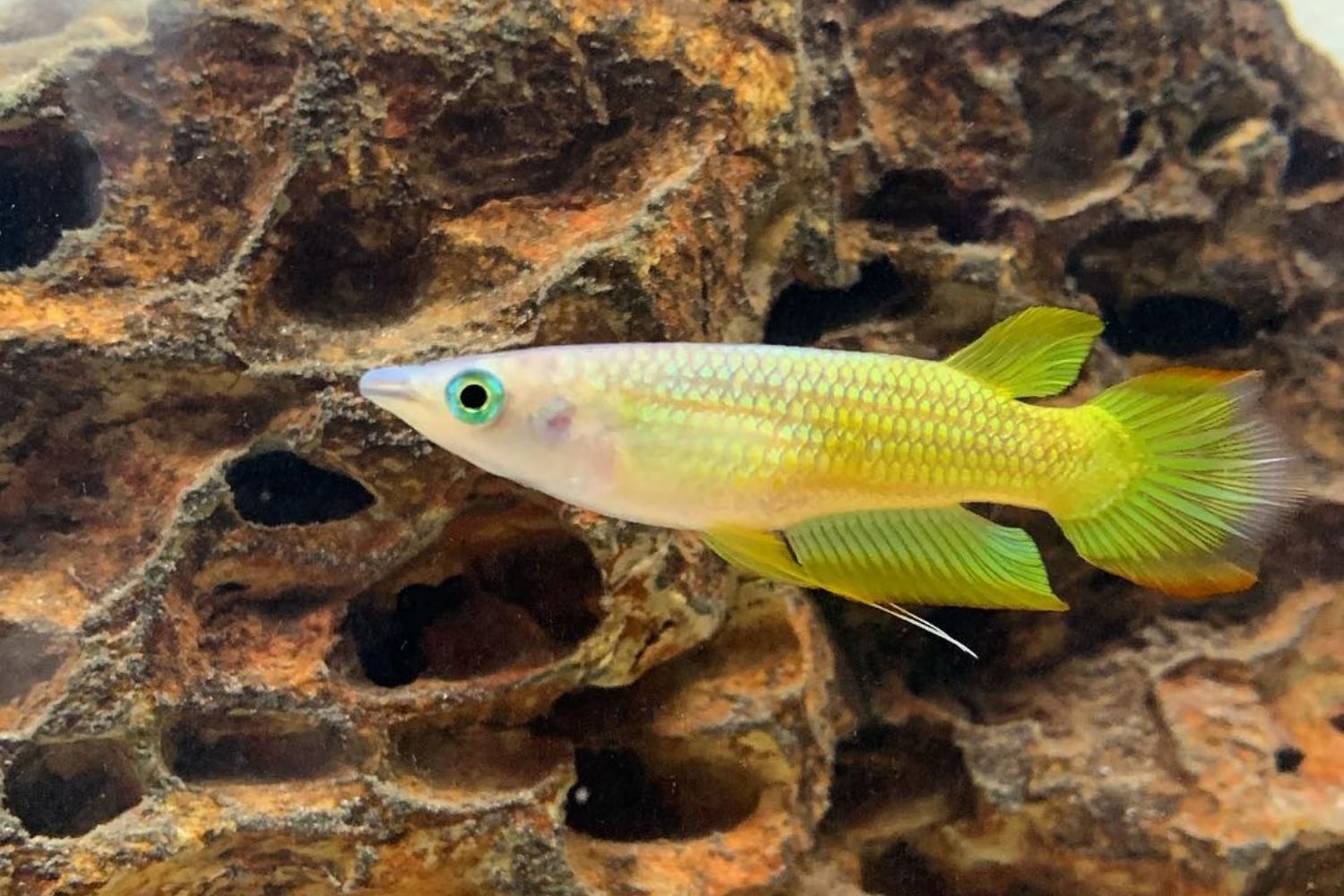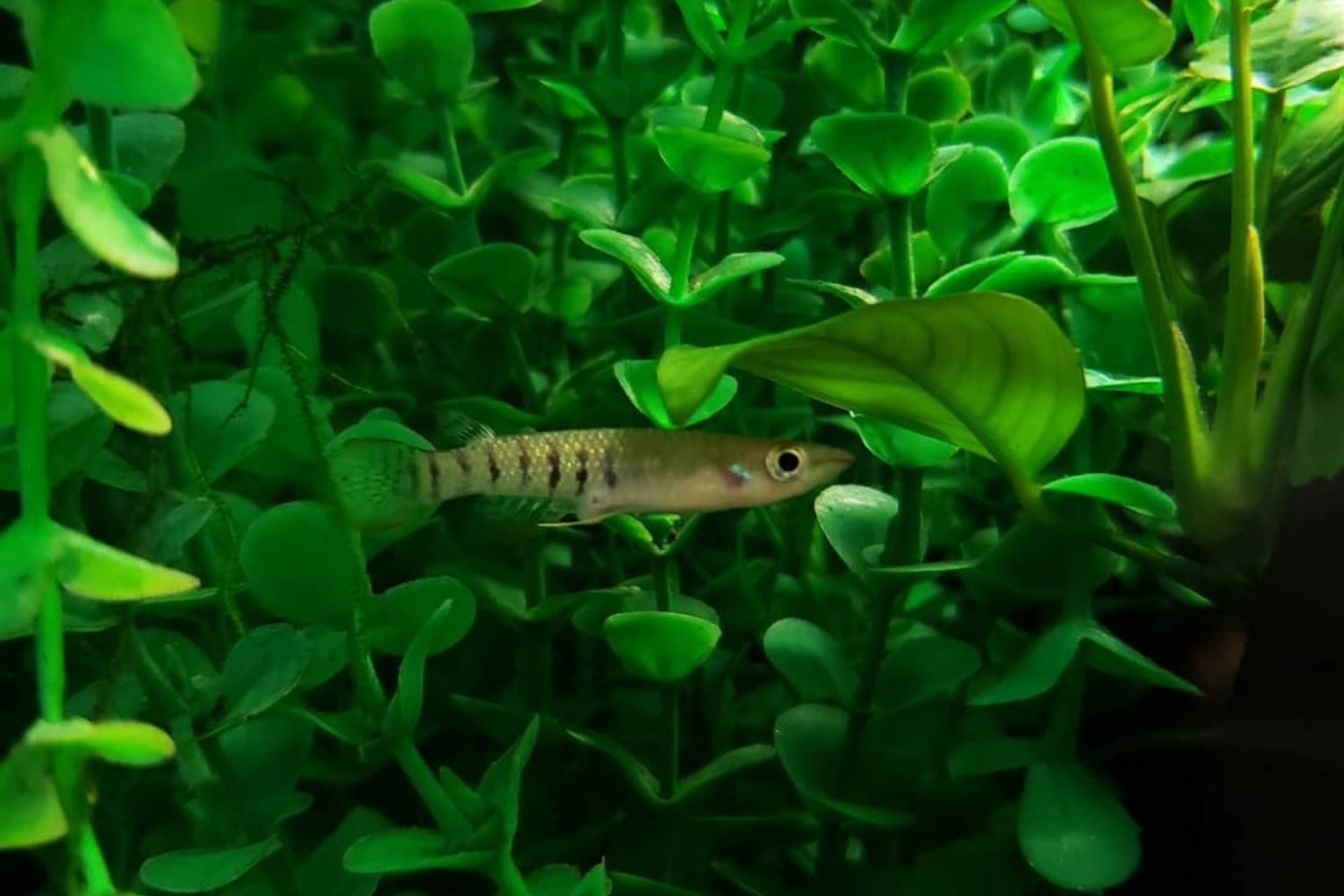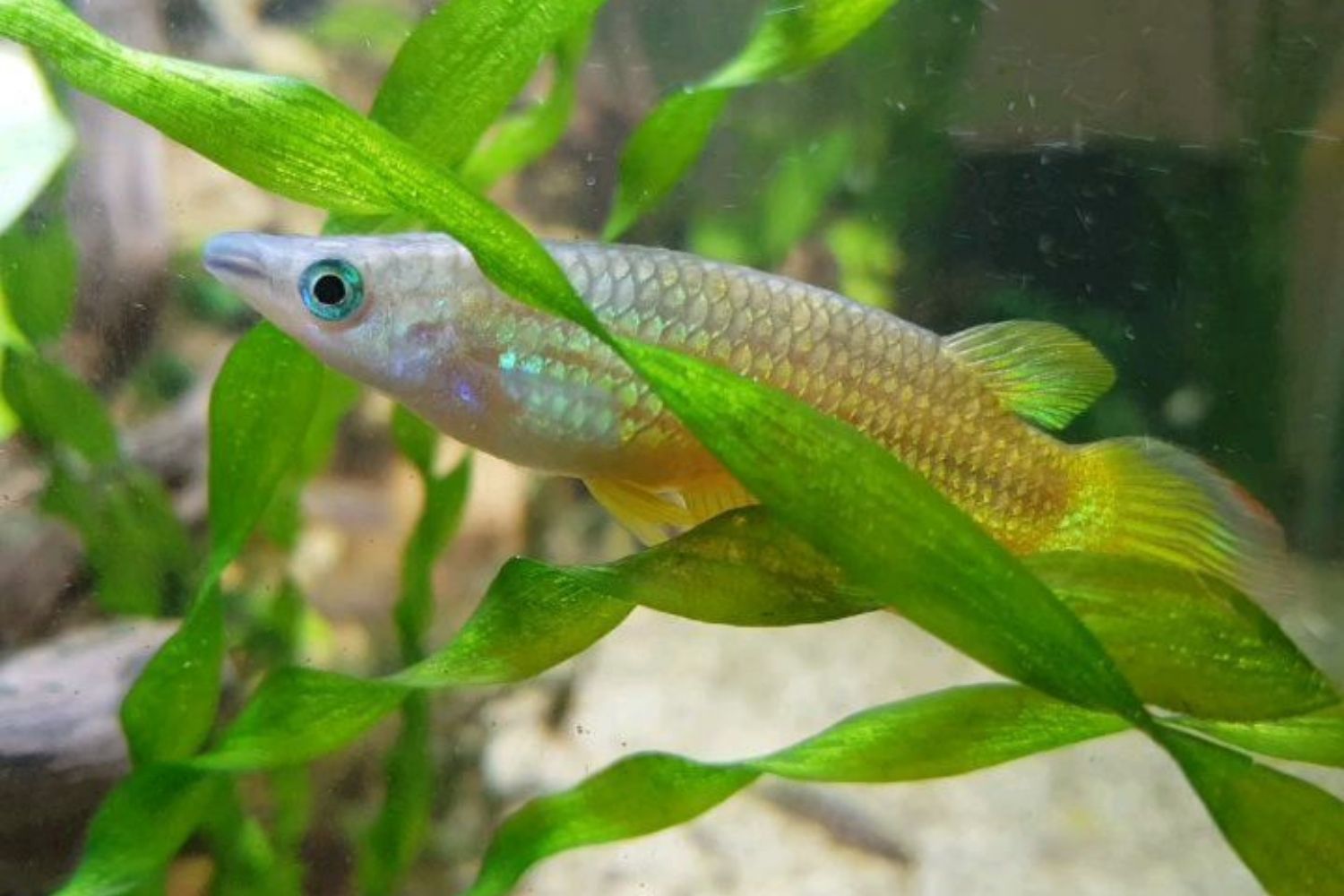Do you love colorful fishes? Then a Golden Wonder Killifish would be your perfect choice! Even though Golden Wonder Killifish is one of the most colorful fish in existence, this fish is not well known in the popular aquarium hobby. This fish takes part in the family of Cyprinodontidae. The term Killy comes from the Dutch word meaning ditch or channel, surely not because this fish is a killer in the aquarium, it is a peaceful one.
Golden Wonder Killifish is a small fish, most of them are 1 – 2 inches (2.5 – 5 cm) and the largest species can grow to less than 6 inches (15 cm). In aquariums, they can live up to 5 years.
Overview
Striped Panchax, Malabar Killifish- or The Golden Wonder Killifish is a well-known fish for being colorful and fairly peaceful. Native in India and Sri Lanka, the Golden Wonder Killifish at first was a striped gray-green fish, which has been cultivated to evolve a gold and blue-green color across its body. Some of them can be completely golden.
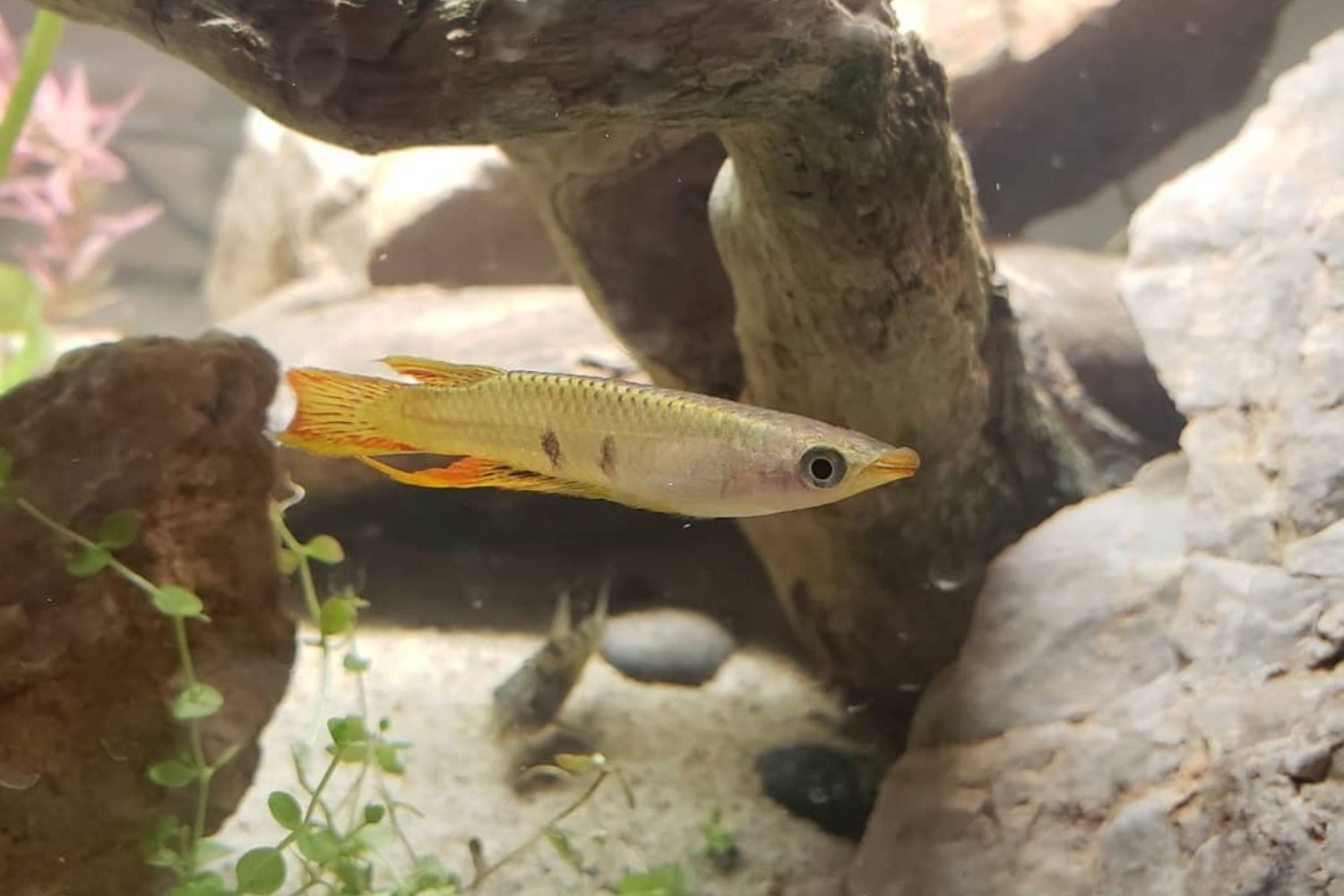
Golden Wonder Killifish unique appearance.
The Golden Wonder Killifish is a hardy fish and highly flexible, making it very easy to keep in aquariums. They are ideal for community aquariums and will transform your aquarium into more colorful and active.
They do not like excessive surface water movement and love tall and floating plants to hide within. They are sometimes known to be jumpy as surface-dwelling fish.
| Care Level | Moderate |
| Lightning | No requirements |
| Diet | Carnivore |
| Behavior | Peaceful |
| Temperature | 72° – 77° F (22 – 25°C) |
| pH | 6.0-7.5 |
| dkH | 3-8 |
| Lighting | No special requirements |
| Minimum Tank Size | 20 gallons (75 Litres) |
| Maximum Size | 4 inches (10 cm) |
Behavior & Temperament
The Golden Wonder Killie is known as a fairly peaceful fish, but sometimes males can be spunky and territorial regarding each other. Many types can be easily kept in community aquariums, but it’s important to keep in mind some rules.
The Golden Wonder Killie is very predacious and will eat without thinking twice about any smaller tankmates, so a wise thing to do is to keep them with larger and dissimilar fish to avoid problems in your aquarium.
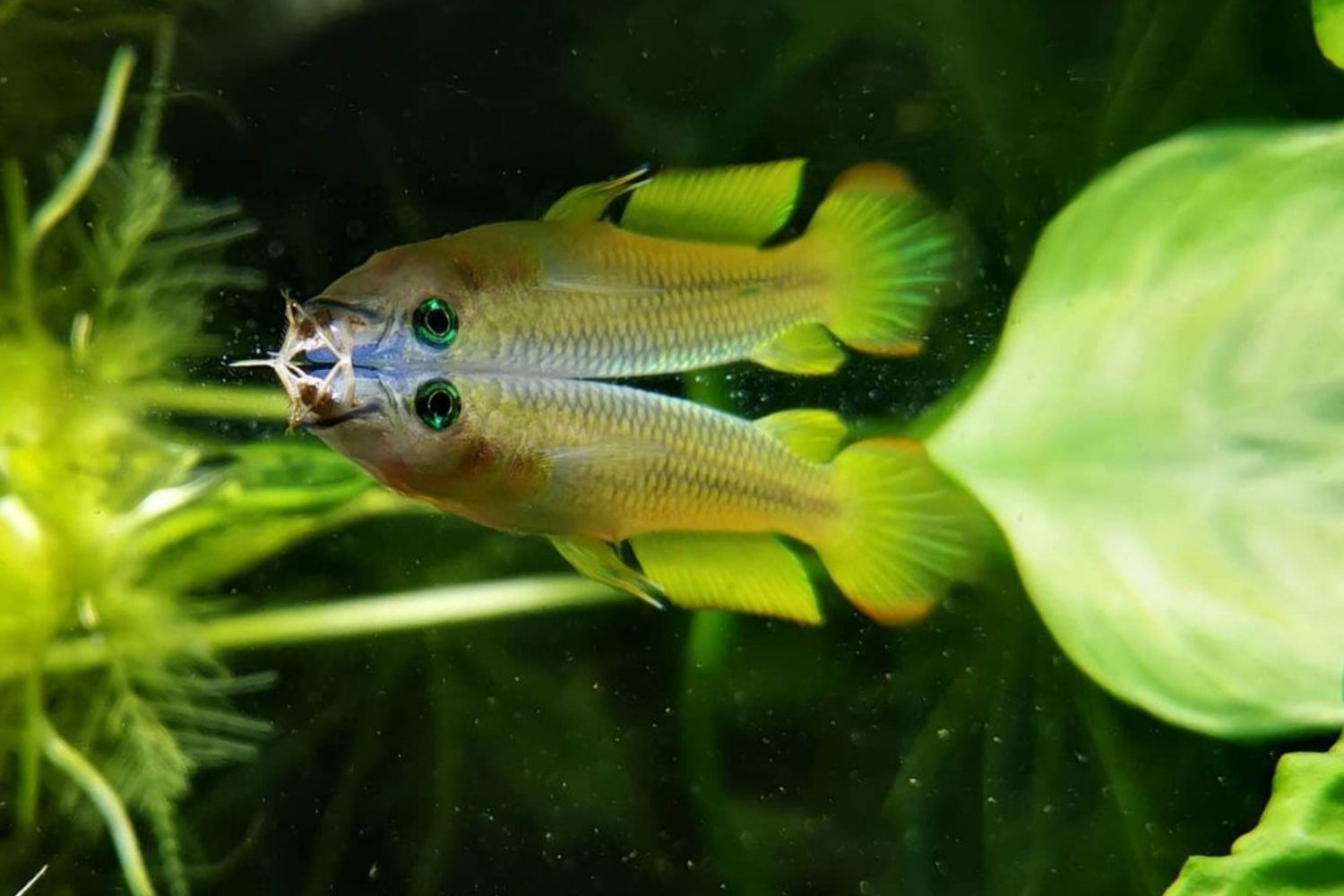
Carful with small fishes. Golden Wonder Killifish can eat them.
Size & Lifespan
The Golden Wonder Killifish is a small fish. Their length doesn’t go more than 4 inches (10cm), meaning that they can live easily in a small tank. In captivity, they can live up to 4 years.
The male Golden Wonder Killie is vividly colored, having a yellow to a blue color with vital orange stripes and spots along its body and fins. Although the female Golden Wonder Killifish is more sprained in form and color.
- Size: 4 inches (10 cm)
- Lifespan: 4 years
Origins & Native Habitat
The Golden Wonder Killie is popular with different names, such as Piki, Striped Panchax Killifish, and Malabar Killi. This fish is widely distributed in Sri Lanka and India, where farmers use them most to keep away annoying insects in the paddy fields. However, this is not an endangered species. Swamps, rivers, plains, fields, and reservoirs are some of the places where this fish can be founded. In every continent except Australia and Antarctica, killifish can be found in tropical and subtropical waters.
The Golden Wonder Killifish love aquariums that are like their wild habitat, meaning a lot of plants and floating varieties.
Tangles of driftwood can provide supplementary shelter since they love to find hiding spots and territories.
Food & Diet
As a carnivore fish, Golden Wonder Killie needs to be fed with frozen food such as brine shrimp, Mysis shrimp, daphnia, bloodworms, and mosquito larvae. Even though they usually refuse dry food, it is worth a try because I tried and succeeded.
When you’re breeding a pair, it’s essential to feed with live foods, which helps them even to keep the colors vivid. Golden Wonders need a variety of foods once or twice a day, and it’s important to feed them only what they can eat in two minutes.
- Diet Type: Carnivore
- Live foods (fishes, shrimps, worms): Most of the diet
- Tablet / Pellet: Sometimes
- Flake Food: Yes
- Feeding Frequency: 1-2 per day
Care & Tank Requirements
Being a hardy fish, Golden Wonder Killie is a not demanding fish and easy to care for in-home aquariums. They are active fish and love the grouping lifestyle. However, they need enough space to swim around, and setting up a 20-gallon tank is a must, but the bigger it is, the better.
Your aquarium should be ensured well to prevent fish escapes since they spend most of the time near the top of the tank, and these fish are expert jumpers. Other things to include are some rocky outcrops, driftwood, and caves to give them hiding spots and supplementary shelter. A contrasting substrate or a dark one can display the bright colors of your fish.
An essential thing for Golden Wonder Killifish is to provide a lot of plants and a good filtration system. Live plants improve water quality and can give a nice look to your aquarium. As a carnivore fish, you should not worry about plants because they will not destroy them.
- Temperature: 72° – 77° F (22° – 25° C)
- pH: 6.0 – 7.5
- KH: 3 – 8 dKH
- Minimum tank size: 20 gallons (75 liters)
Tank Size
Being a small-sized fish makes Golden Wonders perfect for nano aquariums or desktop tanks. For community setups or if you want to keep more than one male, it is recommended a 20-gallon or larger aquarium is. You can decorate your tank with driftwood or peat moss to help soften the water and lower pH and ensure keep the lighting low. Killifish are expert jumpers, so your aquarium should be ensured well to prevent fish escapes since they spend most of the time near the top of the tank.
Water Parameters
Golden Wonder Killifish is a hardy fish, and it can adapt to a variety of water conditions. This fish can survive in a wide range of temperatures. However, it is important to keep a temperature between 72° and 77° F (22 – 25 °C), and they can do well at a pH of 6.0 to 7.5 and hardness between 7° and 10° (120 ppm to 160 ppm). Some killifish keepers prefer to do a lot of water change and avoid filters; however, it is recommended to use a sponge filter.
Compared to other Killifish, Golden Wonders are more tolerant of changeable water
conditions. Maintaining pristine water conditions in your aquarium is very important. You should find a filtration system in the right size for your tank and adjust it accordingly or buffer it with tall, dense planting or rocky outcrops since this fish loves gentle water movement.
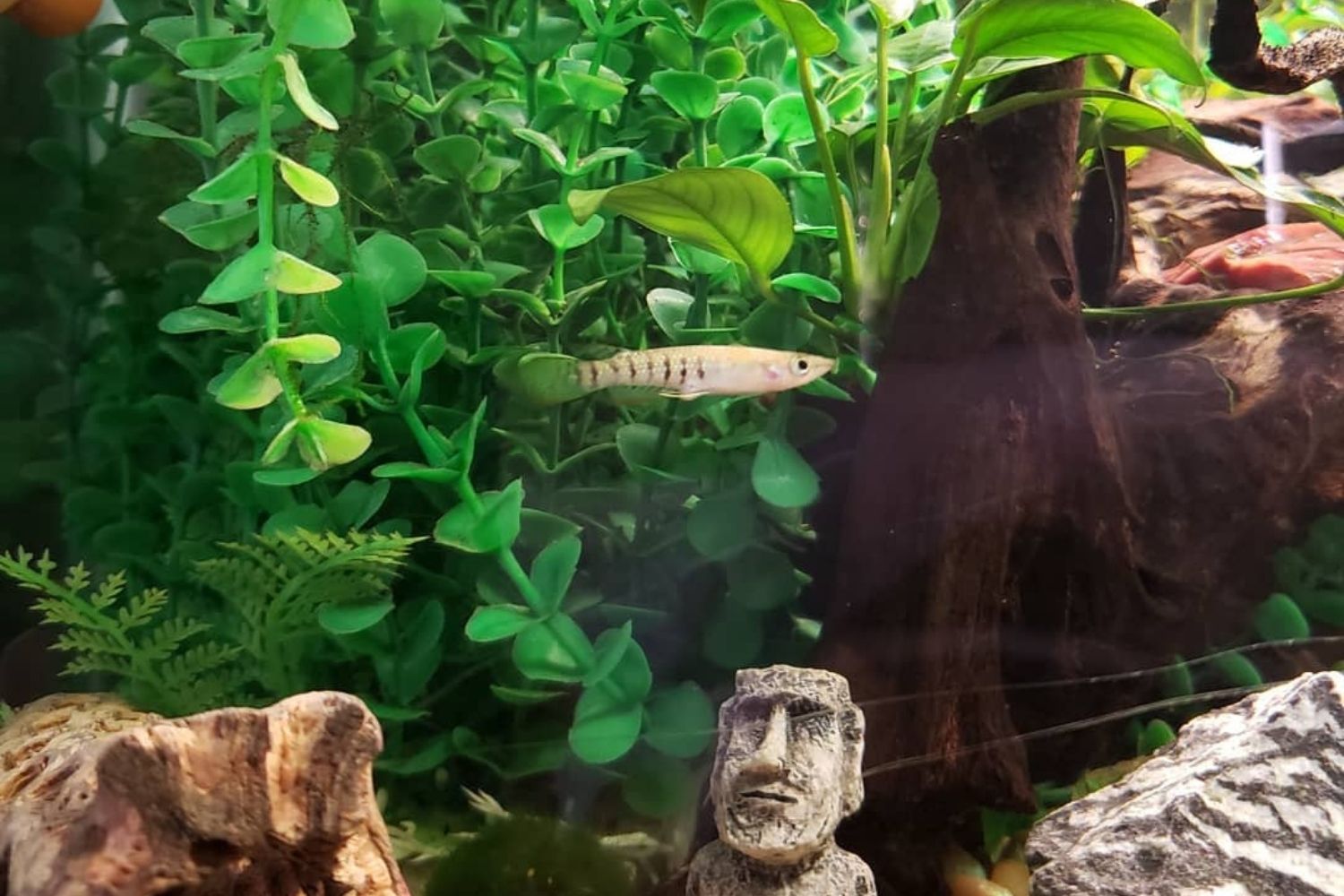
I keep Golden Wonder Killifish with tons of aquatic plants to provide him a lot of space to hide and a oxygenated water.
If you are introducing them to a new aquarium, keep the light off for some hours and do not feed them the first day. To acclimate the Golden Wonders, there are different ways, and we’re going to explain the floating method. The first thing to do is to keep the aquarium lights off and the room light dim. Then you can put the bag of fish into the surface of the water to float. Leave it for about 15 minutes so it can balance with the water in the tank. After this you should add a cup of the tank water every 4 minutes until the bag is full, and then throw out some of the water in the bag and add more water from the tank.
Disease
In a well-maintained tank, diseases are rarely seen. That’s because Killifish are generally very hardy. There is no guarantee that you won’t deal with any disease. Bacterial diseases and velvet can sometimes affect the species. Anything you add to the tank can provide disease, including plants, fish, substrate, decorations, and invertebrates so take care to properly clean or quarantine any items that you intend to add to an established community tank setup.
A well-balanced diet and the proper environment- a tank that is managed to be closer to their natural habitat, is the best way to prevent disease. If your Killifish is stressed are more likely to get a disease.
Breeding
Maybe the most interesting thing about killifish is their different spawning methods. These methods generally separate them into three groups: annuals, semi-annuals, and non-annuals. Annuals live in temporary pools in the wild that dry up each year for periods of up to 6 months.
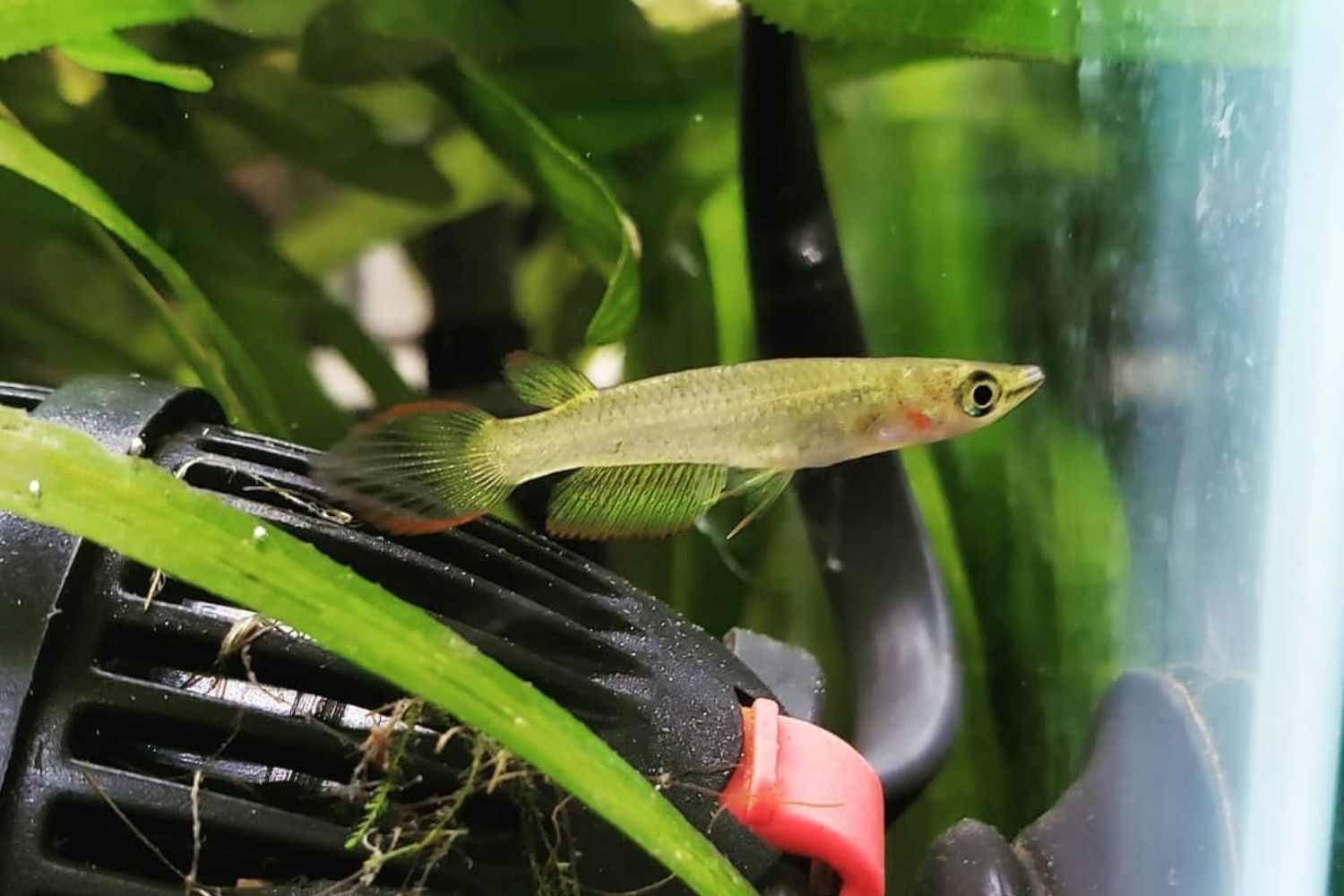
After easy breeding, I got a new Golden Wonder Killifish with unique colors.
The Golden Wonder Killifish is considered an easy species to breed in captivity, and their spawning process is quite the same as with other similar species. Their eggs need not be removed after spawning as they are not annual species. A soft water aquarium with floating aquatic plants is the best breeding environment. Conditioning the female and male killifish in separate tanks before adding them into the breeding tank is what some hobbyists prefer to do.
A female killifish can lay about 90 eggs in a week if provided with convenient conditions. 12 – 14 days is the time that fertilized eggs usually need to hatch. It is essential to transfer the laid eggs to a separate aquarium for security reasons because sometimes adult fish can eat them. Warm water with temperatures of 77 – 80 °F (25 – 27 °C) is fine for the fry, and you can feed them on shredded plants or even with crushed bloodworms and other small insects for faster growth.
Ideal Tank Mates
The Golden Wonder Killifish is an amazing community fish that is considered mainly a peaceful species. However, the male Golden Wonder sometimes is aggressive, especially when it comes to competing with females.
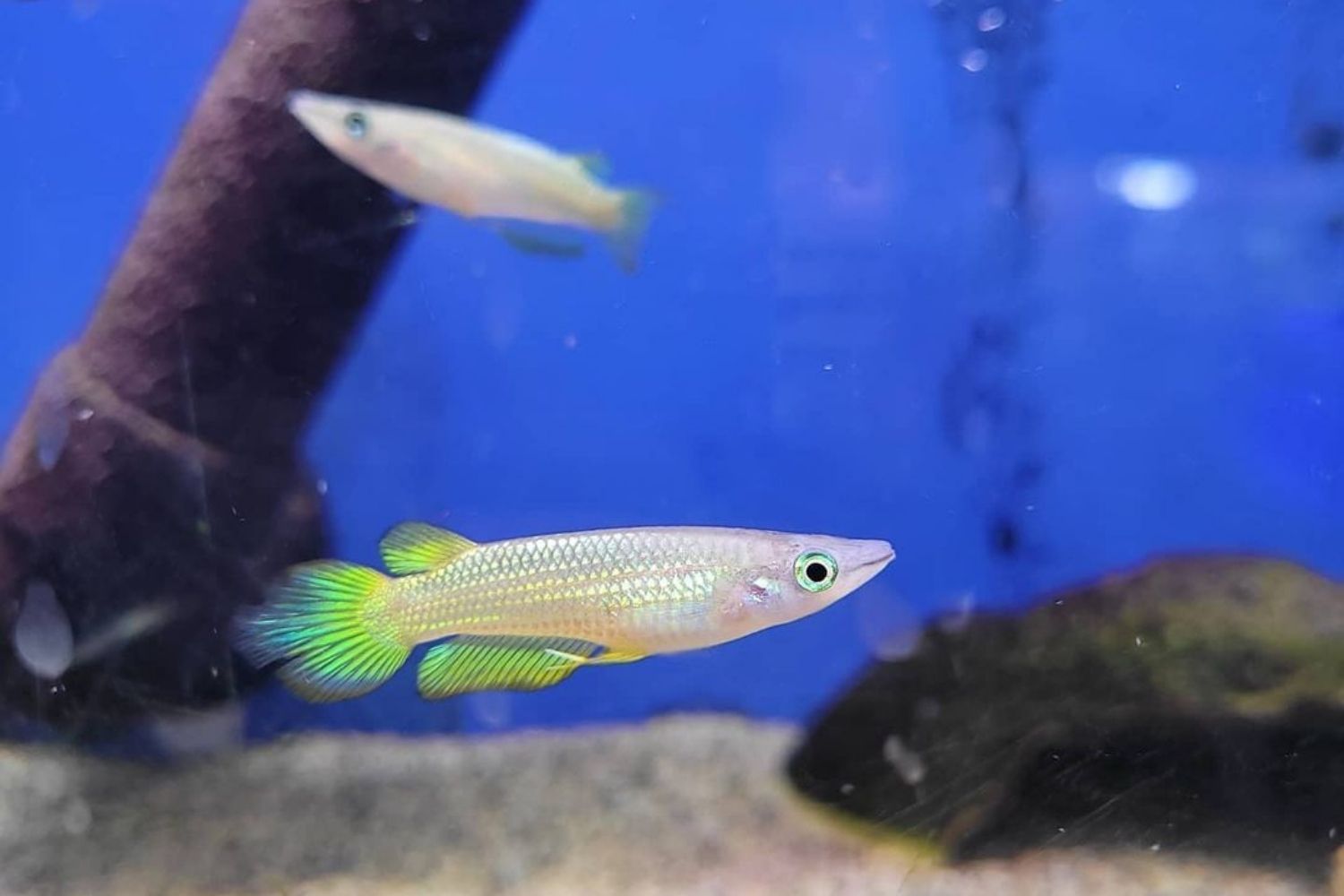
I keep 2-4 Golden Wonder Killifish together.
The Golden Wonder Killie is considered a predacious species. This is the main reason why you should not keep them in community tanks with smaller fish, as they can become lunch. Any bigger-sized fish which is friendly, community, or peaceful, be a tankmate for your Golden Wonder. We can mention larger tetras, rams, Banjo Catfish, Otocinclus, other dwarf cichlids, and most Corydoras Catfish. Also, Vampire Shrimp and snails can coexist with Golden Wonder Killifish.
